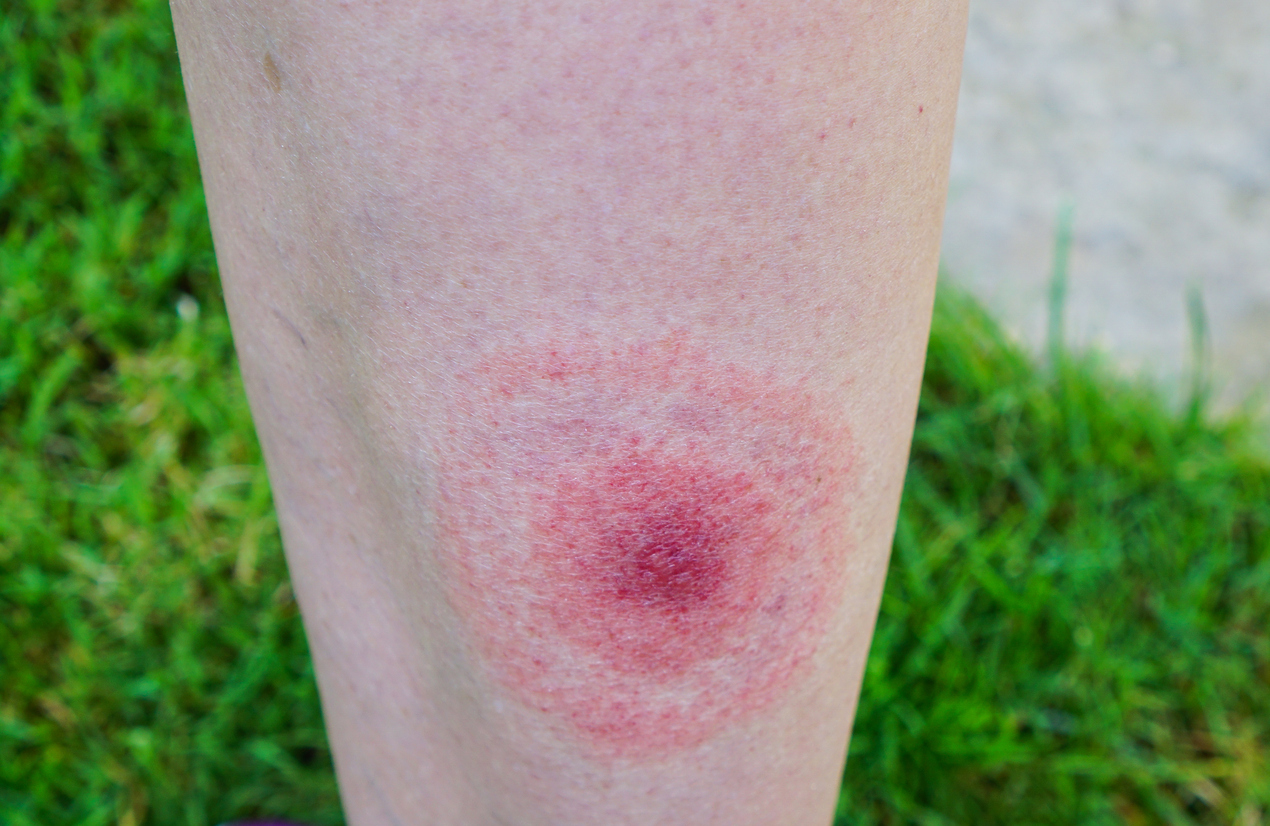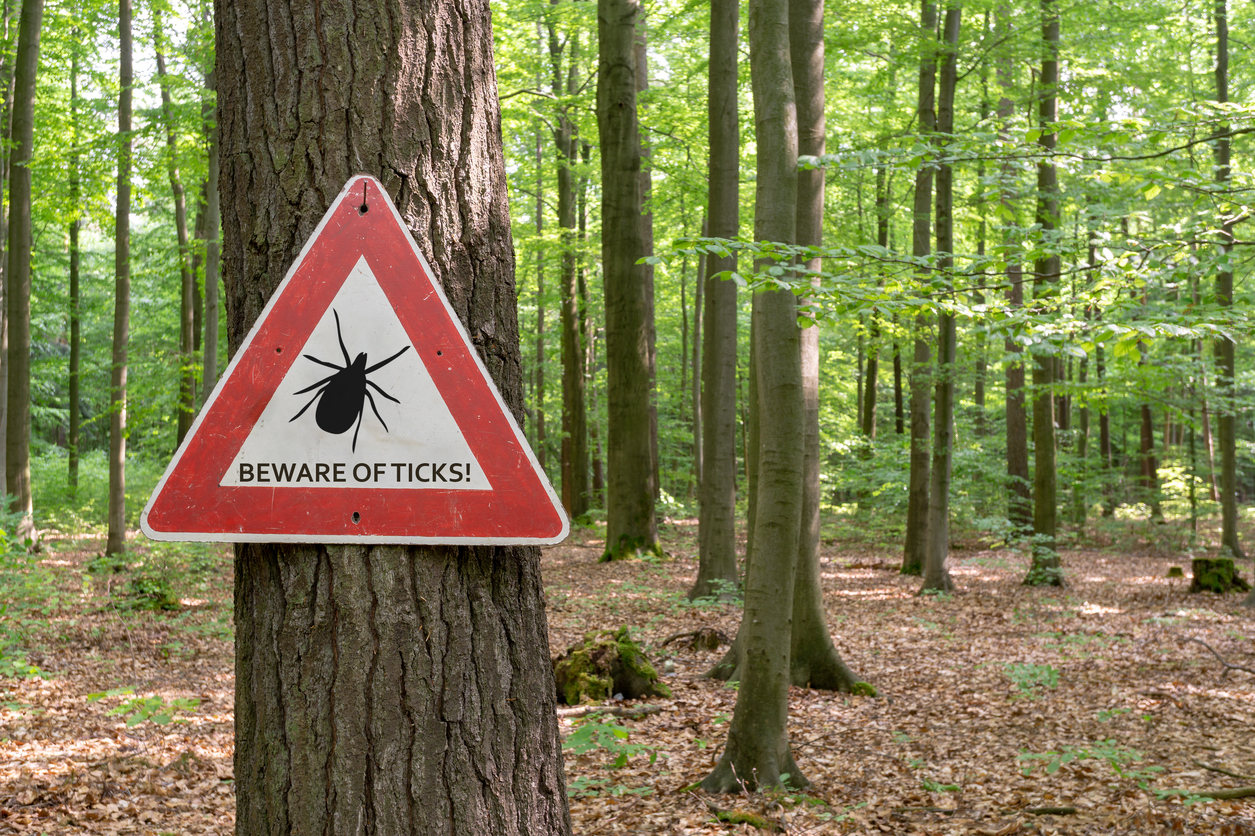Steer Clear of Lyme Disease This Fall
Lyme disease and its pesky carriers are a growing concern for people throughout the U.S. Though fall is in full swing, many parts of the country are experiencing unseasonably warm, wet weather.
While you’re enjoying the mild temps, ticks and their nymphs are feasting during this extended biting season. To keep these pests from ruining your holidays, now is the perfect time to gain a better understanding of what you’re up against this winter.
Below, you’ll find everything you need to know about Lyme disease — from how long it takes to get infected to how many cases your state has reported in years past.

Causes
Lyme disease is transmitted through the bite of an infected tick. These buggers like to latch onto unsuspecting humans walking through the woods or tall grassy areas. They’ll usually attach themselves to hard-to-see places, like the groin, armpits or scalp.
In many cases, it takes 36 to 48 hours for infection to occur. Most of these infections come from “nymphs” (immature ticks) because they’re smaller and harder to see, but that doesn’t mean adult ticks aren’t a threat as well.
Though they’re easier to spot, adult ticks are more active in the cooler fall months — meaning anyone camping, hunting or enjoying nice weather outside should take precautions to avoid these nasty pests.
If you’re planning to spend any time outdoors this fall, preventing tick bites before they happen by treating your backyard and keeping them off your clothing.
Prevention
Insect repellents that contain DEET work well at keeping ticks away, but you may want to treat your clothing if you’re planning to spend an extended period of time outside. Hunters and campers in particular may want to treat clothes and gear with products containing permethrin before leaving the house.
If you live in a wooded area, you should take precautions to create a tick-free zone around your home. You can do this by keeping the lawn mowed, the leaves raked and storing stacks of wood in dry areas. Whenever possible, install a wood chip or gravel barrier between your yard and wooded areas, and keep all playground and patio equipment in sunny locations away from yard edges and trees.
You can also treat your home and yard through pest control methods. If you need help removing and repelling ticks, Arrow offers a comprehensive tick control program that’s tailored to your individual needs.

Symptoms & Treatment
Once a Lyme disease-carrying tick has bitten you, it’s common to see symptoms after a few days. In the first month following a bite, many people report mild Lyme disease symptoms, including:
- Fever, chills and swollen lymph nodes
- Headaches, muscle and joint aches, and fatigue
- Erythema migrans (EM)
The EM rash is the most telltale sign of Lyme disease and occurs in 70 to 80 percent of infected persons at the site of the bite. After three to 30 days, the red, bull’s eye rash will expand gradually and may feel warm to the touch, though it’s rarely itchy or painful.
If you experience the above ailments but don’t seek treatment, Lyme disease symptoms may worsen over time and become more severe. More acute symptoms include:
- Severe headaches and neck stiffness
- Additional EM rashes
- Intermittent pain in tendons, muscles, joints and bones, and severe joint pain and swelling in large joints like the knee
- Facial or Bell’s palsy
- Heart palpitations or an irregular heartbeat
- Episodes of dizziness or shortness of breath
- Nerve pain, as well as shooting pains
- Numbness or tingling in the hands and feet
- Problems with short-term memory
Many of the symptoms associated with Lyme disease are common to other problems and diseases, making it difficult to diagnose — especially when the disease is in its early stages. And late-stage symptoms can be debilitating.
Fortunately, treating Lyme disease is pretty simple once it’s diagnosed. Your doctor will most likely give you antibiotics, and most patients experience complete recovery within a few weeks.
Lyme Disease by the Numbers
Lyme disease is more common in the Northeast, but residents (and visitors) in Southern states should still be wary of infected ticks in the coming months.
Outdoors lovers in Florida, South Carolina, North Carolina and Texas should take precautions to prevent ticks from hitching a ride on clothing and skin. Georgia also has a history of high case numbers in the past, though recent years have seen fewer reported cases.

Lyme Disease & Legislation
Between 1993 and 2013, cases of Lyme disease rose by 340 percent, with an estimated 300,000 people infected in 2013. The increase in Lyme disease cases and states affected has sparked a strong response from the federal government, which now considers the disease to be a significant health risk.
Some in Congress are working to pass the National Lyme and Tick-Borne Diseases Control and Accountability Act. The bill would establish an integrated national strategy to overcome Lyme disease —coordinating these efforts across agencies and the Department of Health and Human Services.
Some states have also taken their own steps to address Lyme disease prevention and treatment. Massachusetts recently passed a bill that calls for all insurance companies to cover the treatment of Lyme disease. Delaware has also passed two separate acts — one allowing for a task force to conduct research on tick habitats and vegetation, and another that focuses on Lyme disease education for health care professionals.

How Arrow is Fighting Lyme Disease
The pest professionals at Arrow understand the importance of preventing Lyme disease before it starts, and that means keeping ticks away from your home and yard.
If you frequently spend time in the backyard, or have children who do, consider contacting Hughes about comprehensive tick prevention for your property. Your pest professional will come up with a custom treatment program to keep your home tick-free all year long.






 YouTube
YouTube Facebook
Facebook Twitter
Twitter